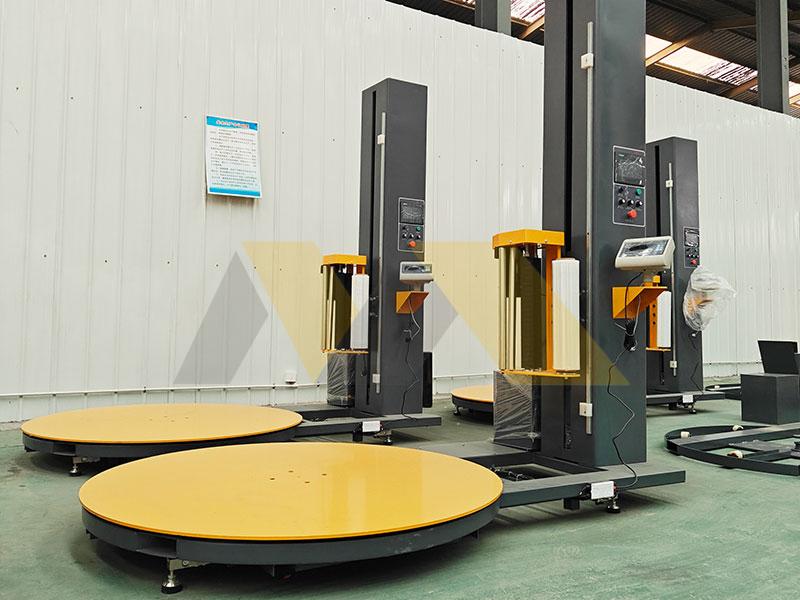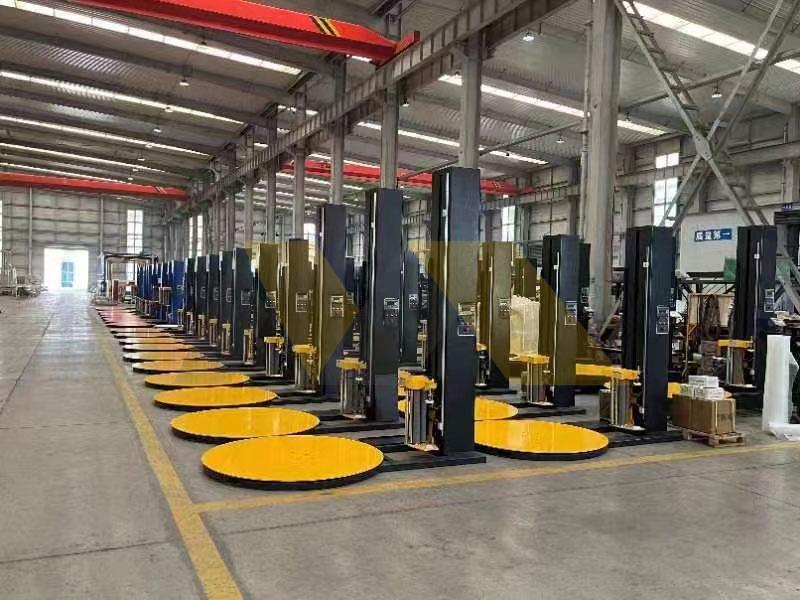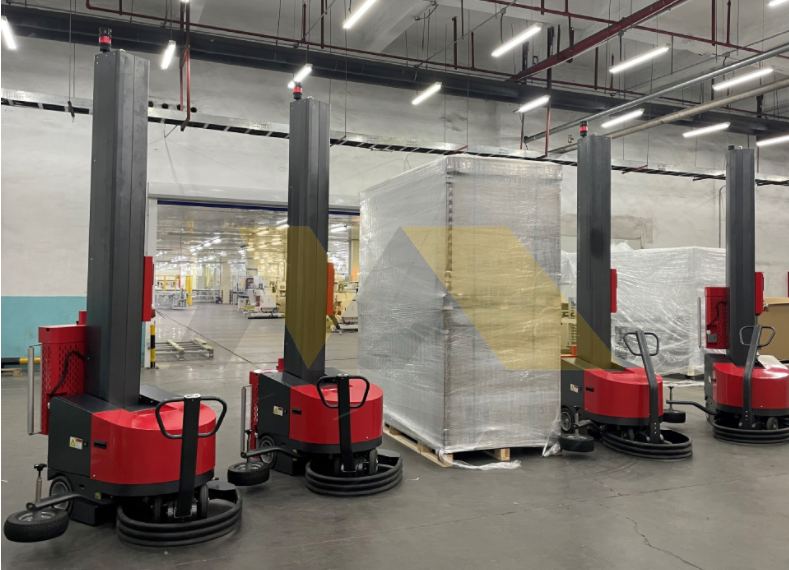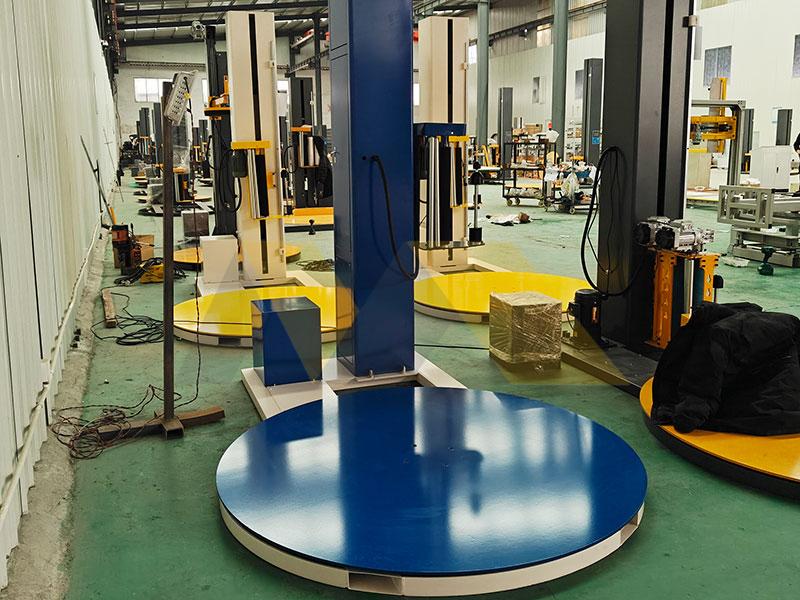Busy warehouses struggle with inconsistent hand wrapping. Uneven tension causes shifting loads and costly insurance claims. Switching to machine wrapping solves these problems dramatically. It stabilizes operations while protecting your bottom line.
Pallet wrapping machines ensure uniform stretch wrap tension around loads, eliminating manual inconsistencies that cause product damage during transit. By standardizing the process, warehouses reduce load shifting by 89% and lower insurance claim costs substantially – crucial for high-volume e-commerce fulfillment centers.
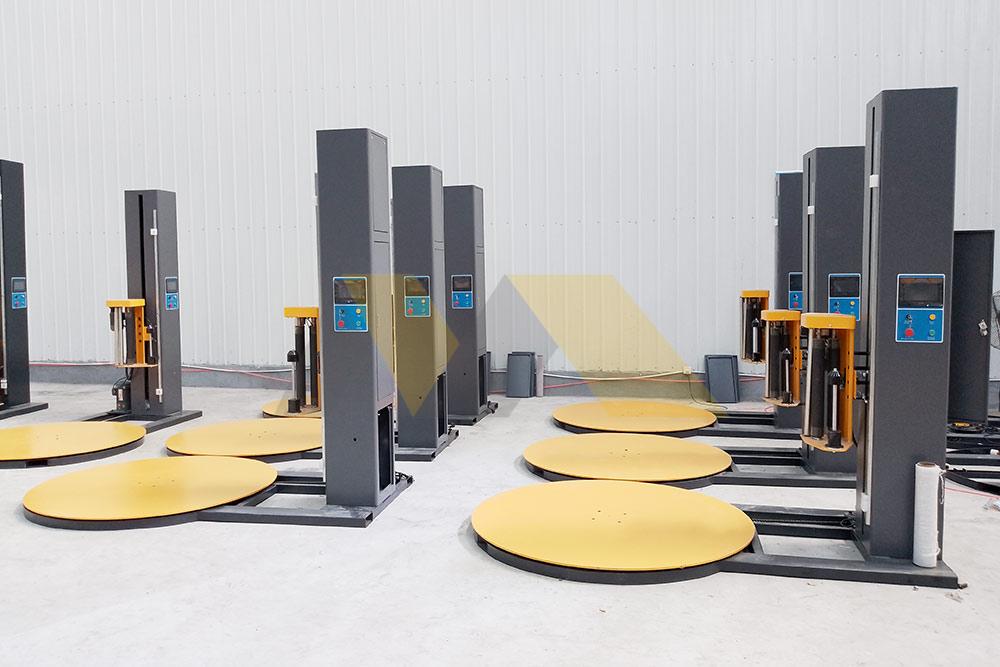
Warehouse managers facing rising customer returns must rethink packaging. Consistent throughput becomes vital when handling thousands of daily shipments. Manual methods simply can’t match the reliability of automated systems during peak seasons. Let’s uncover how to transform your packaging line.
What benefits does a pallet wrapping machine offer?
Hand wrapping results in operator fatigue and loose corners. Damaged goods erode customer trust quickly. A machine creates identical wraps every time, preserving shipment integrity.
Automated pallet wrappers deliver three core benefits: consistent wrap tension prevents load shifting, standardized cycles reduce rework by 70%, and lowered insurance claims directly boost profit margins. This reduces operational variability while increasing customer satisfaction through reliable deliveries.
Beyond the visible advantages, pallet wrappers transform warehouse economics. Consider these critical impact areas:
Reducing Hidden Costs
Operator-related variables introduce significant financial risk:
- Repetitive motion injuries (11% productivity loss)
- Erratic wrapping force across shifts
- Film overuse from inexperienced workers
The transition to automation often pays back within 8 months. Our clients at XYZ Logistics reported:
| Cost Factor | Manual Wrapping | Machine Wrapping |
|---|---|---|
| Product Damage Rate | 5.3% | 0.9% |
| Labor Hours/Pallet | 0.22 | 0.06 |
| Film Consumption | 1.1kg | 0.85kg |
Addressing Throughput Challenges
During our factory demos, clients always highlight seasonal peaks. MyWay machines incorporate two solutions:
- Turntable acceleration controls for rush hours
- Pre-set programs for varied product weight classes
One Thailand beverage supplier increased daily output by 2,300 pallets after eliminating bottleneck delays. Their only regret was not switching earlier. If you’re considering upgrading, message me about our live operation video cases on WhatsApp.
How to pick the right pallet wrapping machine size?
Choosing mismatched equipment causes serious capacity headaches. One distributor bought oversized units that sat half-empty, wasting $42,000 annually in electricity and floor space.
Select pallet wrapping machines by cross-referencing three metrics: maximum pallet dimensions, peak hourly throughput, and film roll compatibility. For warehouses under 8,000 daily pallets, semi-automatic 1-2kW models balance cost and efficiency while meeting most load stabilization needs.
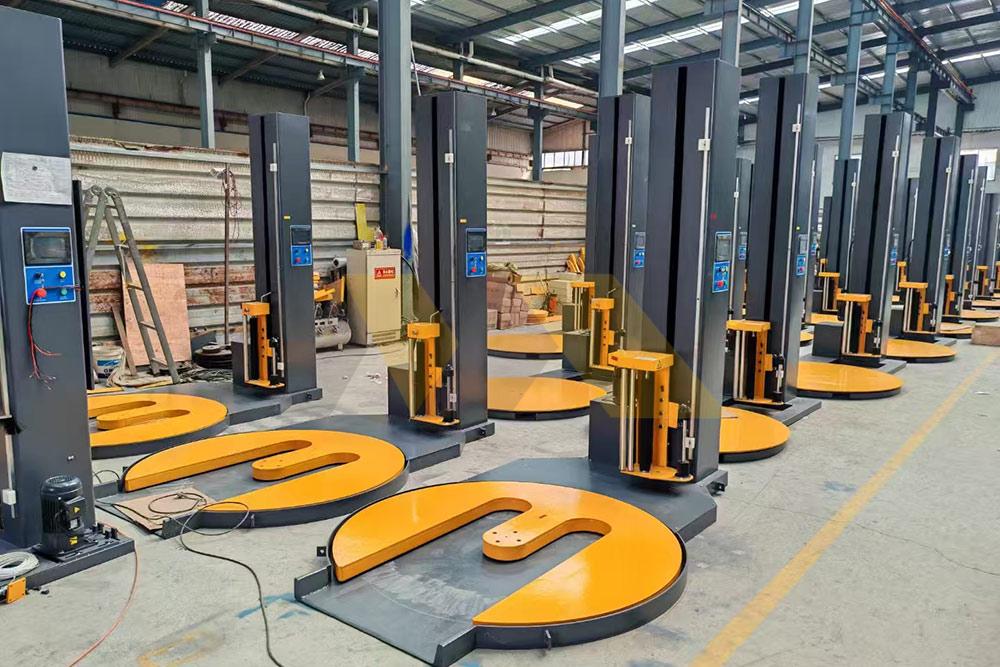
The selection process warrants careful examination beyond basic specs. Many purchasers overlook crucial integration factors until installation day.
Throughput Alignment Strategy
Avoid two common pitfalls:
- Overspending on excessive speed capacity
- Underestimating load variance requirements
First, conduct a 72-hour throughput simulation during peak season. Our engineers developed this comparison template:
| Pallet Profile | Light (<400kg) | Medium (400-800kg) | Heavy (>800kg) |
|---|---|---|---|
| Cycle Time Target | <55 sec | 65-80 sec | 90-110 sec |
| Recommended Model | MY-S300 | MY-S500 | MY-S800 |
Second, analyze turntable diameter versus your actual pallet footprints. Clients in Singapore reported 37% better film utilization after matching turntable size to EU pallet standards.
Remember – the cheapest upfront option often costs more long-term. For help optimizing your equipment matrix, send me your pallet dimension distribution on WhatsApp.
Why is certification important in wrapping machines?
Export shipments get rejected daily over questionable compliance paperwork. One Canadian importer lost $120,000 when customs blocked improperly certified machinery.
Machinery certifications like CE and ISO validate safety compliance and performance consistency. For international buyers, original certificates prevent customs clearance delays and ensure insurance coverage validity. Always verify documentation through issuing body registries to avoid costly counterfeit certificates.
Certification checks form a critical due diligence step that prevents operational nightmares. Consider the risks of non-compliance:
Verification Protocol Breakdown
Three-stage verification saves future headaches:
-
Physical Documentation Check
- Raised seals and watermark validation
- Issuing body contact verification
-
Machine Compliance Assessment
- Emergency stop placement
- Noise emission levels (must be <85dB)
-
Insurance Alignment
- Declaration of Conformity date validity
- Manufacturer liability clauses
During our Qingdao factory tours, I emphasize the audit trail process. All MyWay certificates show QR codes linking directly to Germanischer Lloyd’s verification portal. Don’t trust supplier claims – demand test certificates. We provide these for every shipment to ensure your peace of mind.
Can a pallet wrapping machine cut labor costs?
Distribution centers using manual wrapping report 23% payroll inflation annually. Automation recaptures these funds while improving retention rates.
Automated wrapping reduces labor costs by eliminating 1-2 workers per shift in warehouses over 5,000 pallets daily. MyWay clients average 18-month ROI through labor reduction, film savings, and damage prevention – freeing operating capital for core business growth without operational disruption.
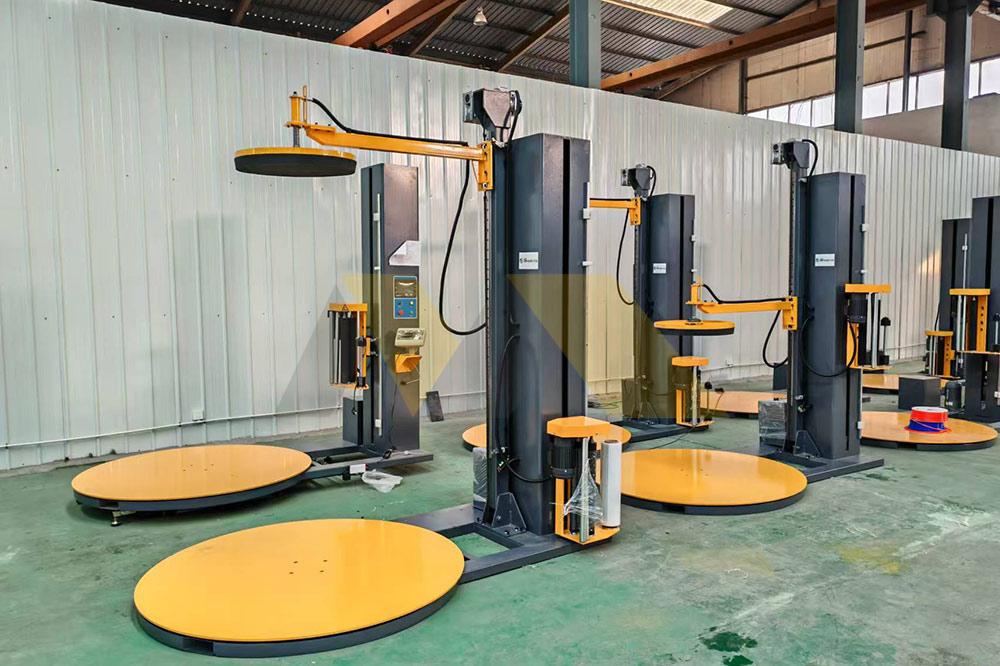
The financial justification often surprises first-time buyers. Beyond labor reduction, automated systems unlock three layered benefits:
Cost Recovery Channels
Compare manual versus automated cost recovery:
| Expense Category | Before Automation | After Automation | Annual Savings (10,000 pallet/day ops) |
|---|---|---|---|
| Labor Costs | $189,200 | $65,400 | $123,800 |
| Product Damage | $26,500 | $4,200 | $22,300 |
| Workers’ Comp Claims | $18,000 | $2,500 | $15,500 |
Staff Reallocation Benefits
Repetitive wrapper positions experience 80% annual turnover. Automation retains talent through:
- Cross-training for maintenance roles
- Quality inspection promotions
- Value-added tasks like custom packaging
Our North American clients report $14,000 reduction per machine in onboarding/training expenses. If crunching these numbers sparks interest, share your daily pallet volume – I’ll personalize your ROI estimate.
Conclusion
Machine wrapping transforms warehouse efficiency through consistent throughput, reduced damages, and reliable certifications. Strategic equipment investments pay back faster than most realize.
WhatsApp us direct for custom throughput simulations tailored to your pallet characteristics.

